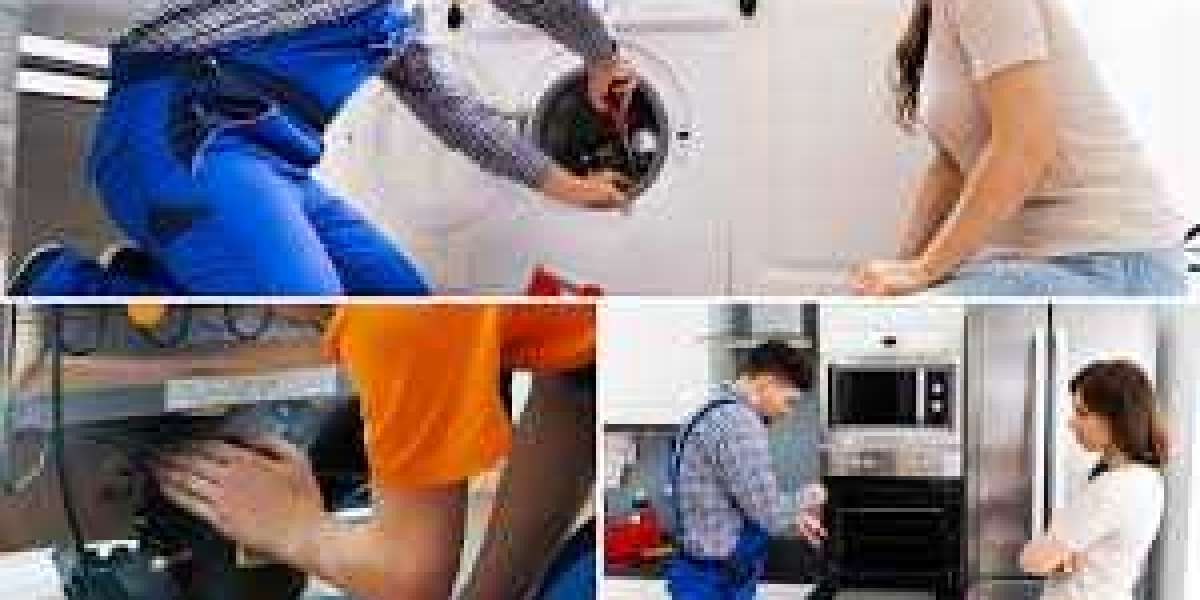
Home appliances are essential to our daily routines, from keeping our food fresh to ensuring our clothes are clean. However, like any machine, appliances can develop problems over time. Before calling a professional, there are a few troubleshooting steps you can take to address common issues. While it's always important to recognize when you need a professional home appliance repair service, some problems may be simple enough for you to resolve on your own. Here are some useful tips to help troubleshoot common appliance issues at home.
1. Refrigerator Not Cooling Properly
A refrigerator that isn’t cooling properly can be a major inconvenience. Here are a few steps to troubleshoot:
Check the Thermostat: Sometimes, the problem can be as simple as a thermostat that has been accidentally turned down. Ensure the setting is between 37°F and 40°F for optimal cooling.
Clean the Coils: Dust and dirt can accumulate on the condenser coils, causing the fridge to work inefficiently. Unplug the fridge and use a coil brush or vacuum to gently clean the coils.
Inspect the Door Seals: If the door seal is damaged or dirty, cool air could be escaping. Clean the gasket and check for any gaps. Replace the gasket if it’s not sealing properly.
If these steps don’t resolve the issue, a home appliance repair service may be needed to check more serious components like the compressor or refrigerant levels.
2. Dishwasher Not Cleaning Dishes Properly
Dishwashers are meant to make life easier, but if they stop cleaning properly, it can be frustrating. Here's what you can do:
Check the Spray Arm: Food particles can clog the spray arm, preventing water from reaching the dishes. Remove the arm and clean it thoroughly.
Clean the Filter: Dishwashers have filters that catch food debris. Over time, these filters can get clogged, leading to poor cleaning. Remove the filter and wash it with warm, soapy water.
Use the Right Detergent: Sometimes, using the wrong detergent or using too much detergent can leave dishes dirty. Ensure you are using a high-quality detergent and the right amount.
If the dishwasher still isn’t working correctly, you may need to contact a home appliance repair service to check for deeper issues like a malfunctioning motor or blocked water line.
3. Washing Machine Not Draining
A washing machine that won’t drain properly can cause water to pool in the drum, leaving your clothes soaked. Here’s how to troubleshoot:
Check the Drain Hose: The first thing to do is inspect the drain hose for any kinks or blockages. If there’s a blockage, remove it to allow water to drain freely.
Clean the Drain Pump Filter: Many washing machines have a drain pump filter that catches lint and debris. If this filter is clogged, it can prevent water from draining. Clean the filter regularly to avoid issues.
Inspect the Lid Switch: If the machine won't drain after the wash cycle, the lid switch may be faulty. This safety feature prevents the machine from spinning when the lid is open. If the switch is broken, it may need to be replaced.
If these steps don't solve the problem, it's time to call a home appliance repair service to investigate any deeper mechanical issues.
4. Oven Not Heating Up Properly
An oven that doesn’t heat up properly can delay meal preparation and affect cooking results. Here’s how to troubleshoot:
Check the Heating Element: If the oven isn’t reaching the desired temperature, the heating element might be burned out. Visually inspect the element for any signs of damage. If it’s not glowing red, it may need to be replaced.
Inspect the Temperature Sensor: If the sensor inside the oven is malfunctioning, it can affect the heating cycle. Test the sensor with a multimeter to ensure it's working correctly.
Calibrate the Oven Temperature: Sometimes, the temperature setting on the oven may need recalibration. Use an oven thermometer to check if the temperature matches the setting and adjust as necessary according to the user manual.
For more complex issues, such as wiring problems or malfunctioning controls, a professional home appliance repair service should be called to diagnose and fix the problem.
5. Dryer Not Drying Clothes Properly
If your dryer isn’t drying clothes efficiently, it could be due to several factors:
Clean the Lint Trap: A clogged lint trap can reduce airflow, making the dryer less effective. Clean the lint filter after every use to ensure proper airflow.
Check the Vent Hose: If the vent hose is blocked with lint or debris, hot air won’t be able to escape, and clothes won’t dry properly. Inspect the vent hose for any blockages and clean it out regularly.
Inspect the Moisture Sensor: Dryers are equipped with a moisture sensor that tells the machine when to stop drying. If this sensor is dirty or faulty, the dryer may stop prematurely. Clean the sensor or replace it if necessary.
If your dryer still isn’t functioning well, it may need a more detailed inspection by a home appliance repair service.
6. Microwave Not Heating Food
When your microwave stops heating food, it’s often a sign of an internal issue. Here are some things you can check:
Test the Door Switches: Microwaves are designed not to operate unless the door is fully closed. If the door switches are faulty, the microwave may not start. Inspect the switches for any damage or misalignment.
Inspect the Magnetron: The magnetron is the component that generates the microwave energy. If it’s broken, the microwave won’t heat food. This is a more advanced issue, and you’ll likely need a professional to replace the magnetron.
Check the Power Source: Sometimes, the issue could be as simple as a loose plug or a tripped breaker. Make sure the microwave is properly plugged in and check your home’s electrical panel for any issues.
If basic troubleshooting doesn’t resolve the problem, a home appliance repair service can provide a thorough diagnosis and repair.
While some appliance issues can be resolved with simple troubleshooting, others may require the expertise of a professional home appliance repair service. Knowing how to troubleshoot common problems can help you determine when it’s time to call for professional help, potentially saving you time and money. However, for complex or hazardous repairs, such as electrical or mechanical failures, always prioritize safety by seeking expert assistance.





